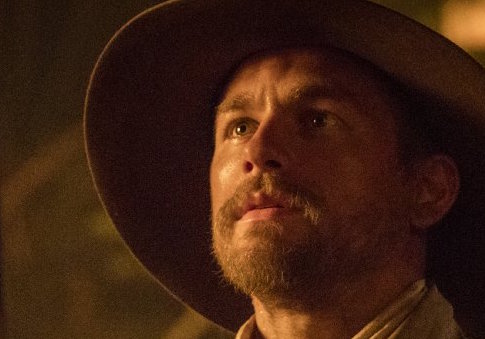The Lost City of Z is a throwback to the spirit of cinema past: an epic, wandering, sometimes ponderous adventure through an unknown landscape riddled with unwelcome dangers and unexpected treasures.
Director James Gray's film is at its best when Percy Fawcett (Charlie Hunnam) and his team of explorers are neck-deep in the jungles of the Amazon discovering the myriad ways in which the landscape can kill them. One brief example: While paddling down a river, the company is assaulted by arrow-firing natives from the bank. The river itself offers no respite, filled, as it is, with murderous piranhas, the tiny fish swarming, nipping, biting, and drowning those unfortunate enough to have taken cover underwater. This abundance of hazard ensures that neither audience nor character has a moment's rest during the dangerous trek.
Fawcett has taken to the jungle in an effort to find glory and redeem the family name. He was "rather unfortunate in his choice of ancestors," according to a swell early on in the film who keeps the apparently disreputable officer at arm's length during an official dinner. Though unheard by Percy, this sort of taunt is rattling about Fawcett's brain when we first see him in 1906. He's an excellent horseman and rifleman without an excellent chest of medals to prove it. He pines for awards he cannot win in peacetime, honor he cannot claim without a rifle in his hand and an enemy in his sights.
But the expansionary phase of the British Empire has passed and it's neither blood nor guts that will redeem the Fawcett name—rather, it's lines on paper, charts drawn up to make the wilderness known, a map that might avert war between postcolonial nations in South America still laying claim to each other's natural resources. At the behest of the Royal Geographic Society, he travels to the Amazon with his aide-de-camp Henry Costin (Robert Pattinson) in order to demythologize an undiscovered country.
The Lost City of Z is preoccupied with the nature of civilizational clash. We see the civilized man versus his savage counterpart, of course, with all the ugliness (slavery on the one hand; headhunting and cannibalism on the other) such a contrast implies. But Gray is also interested in intra-civilizational war, moving from the terrible, deadly beauty of the jungle to the grotesque horrors of the German and British battles of the Great War, or the struggle Fawcett's wife, Nina (Sienna Miller), undertakes to attain the same level of notice her adventurer husband has achieved. The primitive jungle is no more mysterious to navigate than the West, Gray seems to be suggesting in the film's closing shot, where we see a character stride out of the Royal Geographic Society's London headquarters and into a steamy, verdant jungle dreamscape visible only through a looking glass's reflection.
Perhaps. Still, I'll take the honor-and-masculinity-obsessed interwar Brits over the headhunters and slavers of the jungle, to say nothing of Britain's moderate fog over the rainforest's humid haze.
Hunnam is serviceable as Fawcett—more believable in a British accent than the questionable American enunciation he uncomfortably inhabits as a Jager jockey in Pacific Rim or gang leader in Sons of Anarchy. Pattinson is the real revelation here, all squinty-eyed, world-weary calm. Their camaraderie—and their conflict in the jungle with fellow explorer James Murray (Angus Macfayden, who looks as though he's eaten his most famous character, Braveheart's Robert the Bruce, to prepare for this role)—is the most appealing aspect of The Lost City of Z.
